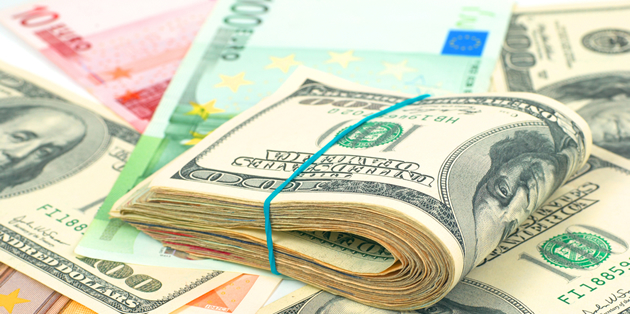Euro US Dollar (EUR/USD) Exchange Rate Rises as US Manufacturing Slumps
UPDATE: The Euro US Dollar (EUR/USD) exchange rate rallied by around 0.4% this afternoon. Leaving the pairing trading at around $1.1069.
The US Dollar slumped on Monday afternoon after data revealed US manufacturing slumped for the fourth consecutive month.
New orders plummeted to the lowest level since 2012 as ISM revealed the PMI slumped to 48.1 from 48.3.
Meanwhile, in a separate PMI measure, Markit revealed November’s index rose to a seven-month high.
Output and new order growth rose to a 10-month high and November saw the fastest rise in employment since March.
However, business confidence remained subdued and commenting on the data, Markit’s chief business economist, Chris Williamson said:
‘Some caution is needed, as these improved survey numbers merely translate into very subdued growth in comparable official gauges of manufacturing production and factory payrolls. Business sentiment also remains worryingly subdued, with expectations about future output growth well down on earlier in the year and running at one of the lowest levels seen since comparable data were first available in 2012.’
Euro US Dollar (EUR/USD) Exchange Rate Muted as German Manufacturing Hits Five-Month High
The Euro US Dollar (EUR/USD) exchange rate remained muted, leaving the pairing trading at around $1.1013.
At the start of the week, Markit’s PMI data revealed that Germany’s manufacturing PMI rose to a five-month high of 44.1.
Despite this, the figure still remains firmly in contraction territory and manufacturing output slumped for the 10th consecutive month in November.
This weighed on the single currency, leaving the pairing muted as this was the longest sequence of decline since 2008-2009.
Commenting on this morning’s data, Markit’s Principal Economist, Phil Smith said:
‘The manufacturing sector has taken a small step in the right direction with the PMI moving to a five-month high in November, but remains in some way even from stabilization, let alone a resumption in growth.
‘There are encouraging sings from the survey’s more forward-looking indicators, with new orders falling at the slowest rate since January and output expectations back in positive territory – albeit only just.
‘Though now less worried about the outlook, manufacturers remain in retrenchment mode as they report lower capacity utilization and look to save costs. Manufacturing is course to make a negative contribution to economic growth in the fourth quarter and, through ongoing factory job losses, remains an indirect drag on the rest of the economy as well.’
Hong Kong Legislation Causes US-China Trade Deal to Stall
The US Dollar remained under pressure as reports revealed that a US-China trade deal has stalled thanks to US support in Hong Kong.
A report from Axios cited a source close to President Trump’s negotiating team on Sunday, stating that a ‘phase one’ trade deal has now ‘stalled because of Hong Kong legislation’.
US President Donald Trump brought a bill to law on Wednesday, backing anti-government protests and increasing US-China trade tension.
The report also revealed China’s leader, Xi Jinping needed more time for his domestic policies to calm.
However, this morning’s upbeat Chinese manufacturing surveys and hopes for a trade deal encouraged markets and limited Dollar losses.
Euro US Dollar Outlook: Will Weak Manufacturing Weigh on USD?
Looking ahead to Tuesday, the US Dollar (USD) could slump against the Euro (EUR) following the release of the US ISM manufacturing PMI.
If data reveals US manufacturing continues to remain firmly in contraction, it is likely the ‘Greenback’ will slide.
Meanwhile, Dollar losses could be limited if markets remain relatively upbeat about the US and China reaching a deal.
If reports reveal that negotiating teams are closer to reaching a ‘phase one’ deal it is likely the Euro US Dollar (EUR/USD) exchange rate will be left flat.



